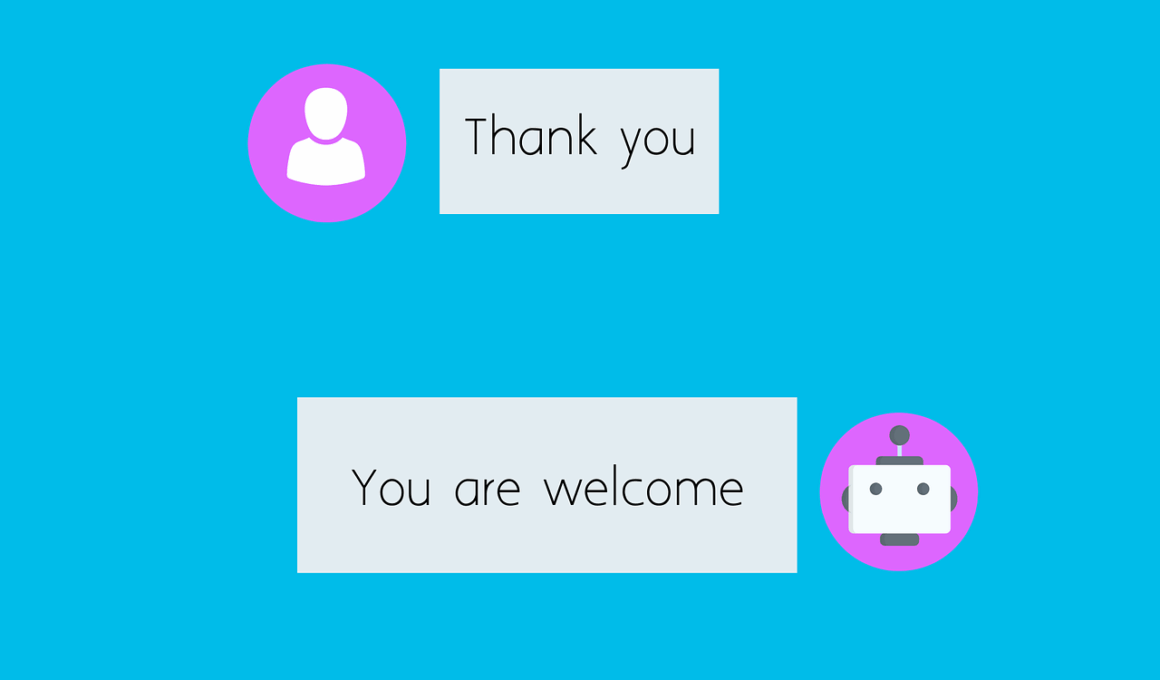Overcoming Challenges in Automated Social Media Customer Care
Customer service via social media has become a crucial aspect of modern business strategy. With the increasing reliance on digital platforms, businesses now face the challenge of responding to customers promptly. Therefore, automating social media customer care can help organizations manage their workload effectively. The key is to select the right tools that can enhance productivity while maintaining customer satisfaction. Utilizing social media automation tools allows businesses to streamline responses, manage inquiries efficiently, and gather insights into customer preferences. However, implementing these tools comes with its own set of hurdles. Ensuring the automation systems can provide personalized responses remains vital for a successful customer experience. Balance between automation and human touch must be maintained, as customers seek genuine interactions when they reach out for assistance. Although it may seem daunting, leveraging technology in this way can ultimately lead to improved engagement. Finding the right mix of automation and personal touch is essential for achieving effective communication in customer service. By integrating various tools and strategies, businesses can create a responsive social media presence while alleviating the pressures faced by customer service teams as they strive for efficiency.
One of the most significant challenges faced by companies is finding the right tools for social media customer service automation. The choices available can be overwhelming, and selecting the ideal fit for specific business needs can significantly impact performance. Many businesses struggle to differentiate between various options like chatbots, automated response systems, and customer relationship management (CRM) tools. Moreover, the rapid evolution of technology creates an ever-changing landscape, making it difficult for organizations to stay updated on the best solutions available. When choosing tools, businesses should focus on interoperability and scalability to ensure configurations can evolve as strategies develop. Something as simple as choosing software with analytics capabilities can provide insights into customer interactions, paving the way for improved customer service practices. Additionally, actively acquiring customer feedback on automated interactions can guide businesses in refining their strategies. Companies should also ascertain how such tools integrate into their existing frameworks to prevent disruptions. Overall, selecting the proper tools is crucial in overcoming challenges of automated social media customer service, ultimately fostering customer relationships while enhancing operational efficiency.
Challenges of Automation Implementation
Implementing automation tools requires thoughtful planning and consideration. One of the main challenges organizations face is employee resistance to new systems. Employees might feel threatened by automation, fearing it will replace their roles. It is essential to address these concerns by emphasizing the benefits of automation, such as allowing employees to focus more on complex tasks that require critical thinking. Training and support play pivotal roles in successfully implementing new tools. Furthermore, establishing measurable objectives for automation can help align employee goals with organizational strategies. Clear communication about the purpose of automation fosters a culture of acceptance and encourages employees to embrace these changes. Additionally, tracking performance metrics to assess the effectiveness of automation tools is critical. Companies must be vigilant in identifying any issues that arise during implementation, allowing swift remedial action. An ongoing evaluation process helps understand how well the new system integrates with current workflows. Overall, a collaborative approach among stakeholders ensures that the transition into automated social media customer service is smooth and beneficial for both employees and customers alike.
Customer expectations continue to evolve, especially as technology advances, posing a persistent challenge for automated social media customer service. Today’s consumers demand rapid responses and personalized interactions, creating a gap between what automation can deliver and what customers desire. To bridge this gap, businesses must choose automation tools that allow for personalization by using data wisely. Techniques such as reminders of previous interactions and customized responses contribute to a more satisfying customer experience. Ensuring that automation systems are designed to emulate human-like interactions helps create a connection between customers and the brand. Continuous training of automation systems can facilitate more refined, context-aware interactions. Moreover, providing customers with easy options to transition their inquiries to human representatives is crucial. Transparency in this process reassures customers that they will still receive assistance if automation falls short. Companies should regularly gather feedback to gauge customer satisfaction levels with automated interactions, adjusting strategies as necessary. Keeping a keen eye on evolving customer preferences ensures that businesses maintain a sense of relevance in the competitive digital landscape. Ultimately, overcoming challenges in meeting customer expectations requires a proactive approach to social media automation.
Continuous Improvement in Customer Engagement
Investing in social media customer service automation is not a one-time effort but an ongoing journey. To thrive, organizations must stay up-to-date with evolving technologies, trends, and consumer behavior. Regularly monitoring performance indicators helps businesses gain insights into how well their automated systems function. These indicators can include response times, customer satisfaction scores, and other measures that reflect the impact of automation on the customer experience. It is also important for teams to foster a culture of continuous improvement by adapting strategies based on these insights. This involves regularly updating automated responses and workflows to reflect current business practices. This adaptability ensures that customers continue to receive timely information in a manner that aligns with their needs. Furthermore, engaging in testing different messaging strategies can lend valuable insights into improving customer interactions. Interactions can be measured and analyzed using A/B testing to determine efficacy and customer satisfaction. By committing to a cycle of evaluation and adaptation, companies can enhance their automated processes, ultimately leading to richer customer experiences and long-lasting relationships.
As organizations embrace automation for their social media customer service, security concerns can also present challenges. Automating customer interactions may expose sensitive data to cyber threats, increasing vulnerability. Therefore, implementing robust security measures is paramount to protecting customer data effectively. Organizations should select automation tools that prioritize data encryption and comply with relevant data protection regulations. Additionally, training employees about the importance of data security and best practices for handling sensitive information plays a crucial role in safeguarding customer interactions. Utilizing third-party audits of automation systems can provide additional layers of security assurance. Furthermore, responding promptly to security breaches, should they occur, is vital. Demonstrating accountability and transparency during crises can help maintain customer trust. Regular updates from organizations on how they protect data build confidence in their commitment to security. In turn, this encourages customers to engage with automated services without fear of compromise. Ultimately, managing security challenges requires vigilance and a proactive approach in selecting secure automation tools and instilling a culture of data protection within organizations as they provide seamless customer care.
Final Thoughts on Automated Solutions
Organizations must recognize that while automation offers numerous benefits for social media customer service, it is not a one-size-fits-all solution. Finding the right balance between automation and human interaction is essential to achieving customer satisfaction. As customers continue to value genuine connections, businesses must remain vigilant in assessing the performance of their automated tools. Leveraging analytics and customer feedback will help organizations refine their strategies and optimize customer experiences. Adapting to change is crucial in a fast-paced digital landscape. Companies should invest in continuous employee training to ensure they are well-equipped to use automated tools effectively. Additionally, storytelling techniques within automated messages can foster emotional connections and enhance engagement levels. Following industry trends and setting benchmarks for service excellence will ultimately give businesses a competitive edge. The journey towards successful social media customer care automation is ongoing and should focus on customer-centric strategies. By investing in these efforts, businesses can build strong relationships with customers, turning social media into a powerful channel for customer engagement and support.
Finally, addressing the challenges of automated social media customer service requires an integrated approach that prioritizes customer satisfaction. Engaging customers on social media requires embracing the innovative qualities of automation while also respecting the need for personal touch. As we move forward in an era increasingly dominated by technology, organizations must recognize the importance of human elements within automated systems. By successfully establishing a blend of automated interactions that complement human service agents, companies can provide effective, satisfying customer experiences. The incorporation of AI-driven tools, alongside thoughtful strategies, allows for a harmonious environment that promotes response efficiency. Advanced algorithms should anticipate customer needs based on historical interactions, paving the way for smoother communications. This ensures customers feel heard, valued, and understood. A successful customer service apparatus on social media must be agile enough to adapt to changing customer demands. The synergy between human skill and digital efficiency can ultimately create robust customer support structures. Companies that acknowledge these challenges and implement effective solutions will not only enhance their reputation but also cultivate long-term loyalty from their customer base.


